As a parent, noticing your child struggle with movement can be concerning. Pediatric movement disorders can impact your child's ability to perform everyday tasks and their overall quality of life. This guide will explore five common movement disorders in children, explain their symptoms, and provide insight into the treatments available to help your child thrive.
At the New Jersey Pediatric Neuroscience Institute (NJPNI), we specialize in providing expert care for pediatric movement disorders, ensuring every child receives personalized and compassionate treatment.
What Are Pediatric Movement Disorders?
Pediatric movement disorders are neurological conditions that affect a child’s ability to move smoothly and effectively. These disorders may range from mild coordination issues to more severe conditions involving involuntary muscle movements.
Causes:
- Genetic disorders
- Metabolic disorders
- Prematurity
- Brain bleeding
- Brain injuries and traima
- Stroke
- Developmental abnormalities
Early diagnosis and intervention are crucial to managing these disorders and minimizing their impact on a child’s life.
If your child is experiencing difficulties with movement, it is important to seek medical attention from a specialist in pediatric neurosurgery in NJ. These experts are trained to diagnose and treat pediatric movement disorders, providing the best possible care for your child.
5 Common Movement Disorders in Children
Understanding common movement disorders can help parents recognize early warning signs and seek appropriate care.
1. Spasticity
Spasticity is commonly seen in children with Cerebral palsy (CP). CP is a neurological condition caused by brain damage before, during, or shortly after birth. It affects movement, coordination, and posture.
- Symptoms: Muscle stiffness, difficulty walking, and poor coordination.
- Treatment: Physical therapy, occupational therapy, medications, and assistive devices.
2. Tourette Syndrome
Tourette syndrome involves repetitive, involuntary vocal and motor tics that typically appear in childhood.
- Symptoms: Blinking, throat clearing, and uncontrollable movements.
- Treatment: Behavioral therapy, medication, and support groups for emotional well-being.
3. Dystonia
Dystonia causes involuntary muscle contractions that lead to twisting and repetitive movements.
- Symptoms: Abnormal postures, muscle spasms, and difficulty controlling movement.
- Treatment: Medications, physical therapy, and in some cases, surgery.
4. Ataxia
Ataxia affects coordination and balance, often leading to unsteady movements.
- Symptoms: Difficulty walking, tremors, and trouble with fine motor skills.
- Treatment: Physical therapy, speech therapy, and assistive devices like walkers.
5. Parkinson’s Disease
Although rare in children, juvenile Parkinson’s disease can cause tremors, rigidity, and slowed movements.
- Symptoms: Muscle stiffness, tremors, and balance issues.
- Treatment: Medications and therapies to improve mobility and quality of life.
What are the available therapies for pediatric movement disorders?
Effective treatment requires a multidisciplinary approach tailored to the child’s specific needs:
- Physical Therapy: Focuses on improving strength, balance, and coordination.
- Occupational Therapy: Helps develop fine motor skills and manage daily activities.
- Speech Therapy: Assists with speech and swallowing difficulties.
- Medications: Can manage symptoms like muscle stiffness or spasms.
- Botox injections: Can help with focal muscle spasms and spasticity
Surgical Options: Considered in severe cases where other treatments are ineffective.
Discover Premier Pediatric Movement Disorder Treatment at NJPNI
At the New Jersey Pediatric Neuroscience Institute, we are committed to providing top-tier care for children with movement disorders.
Why Choose NJPNI?
- Experienced Team: Specialists in pediatric neurology and movement disorders.
- Tailored Treatment Plans: Personalized care for each child’s unique needs.
- Comprehensive Therapies: Offering physical therapy, occupational therapy, and cutting-edge interventions.
- Family-Centered Approach: Supporting parents every step of the way with education and resources.
Our state-of-the-art facilities ensure that your child receives the best care available, with a focus on improving their quality of life and helping them reach their full potential.
Conclusion
Pediatric movement disorders can be challenging, but with early diagnosis and expert care, children can overcome these obstacles and thrive. Understanding conditions like cerebral palsy, Tourette syndrome, dystonia, ataxia, and juvenile Parkinson’s disease is the first step in advocating for your child’s health.
At NJPNI, we’re here to guide you on this journey with compassionate care and advanced treatment options. If you suspect your child has a movement disorder, don’t hesitate to reach out. Schedule an appointment today to give your child the support they need.


